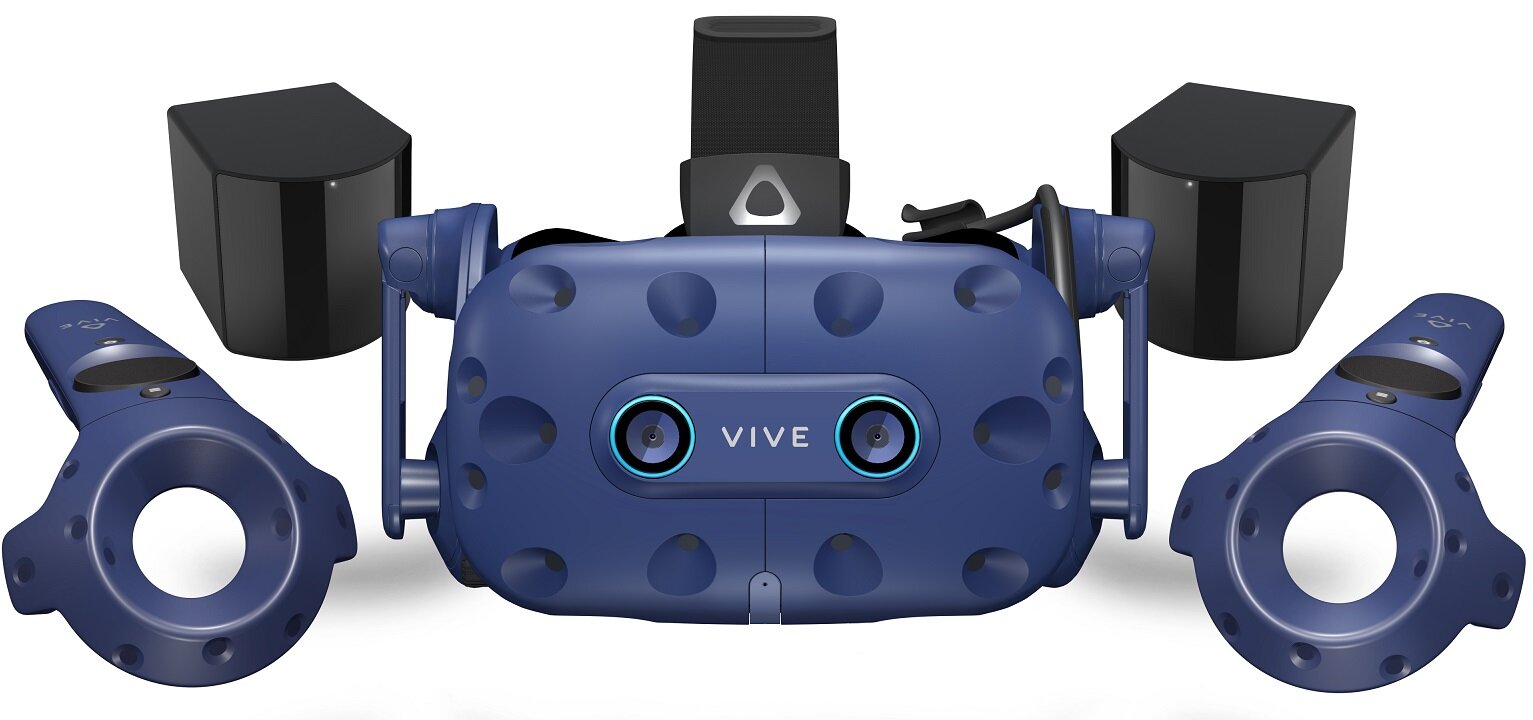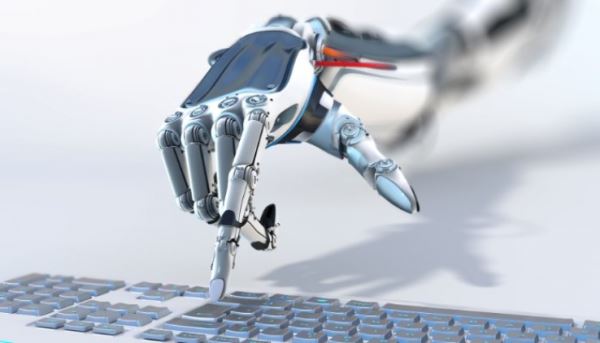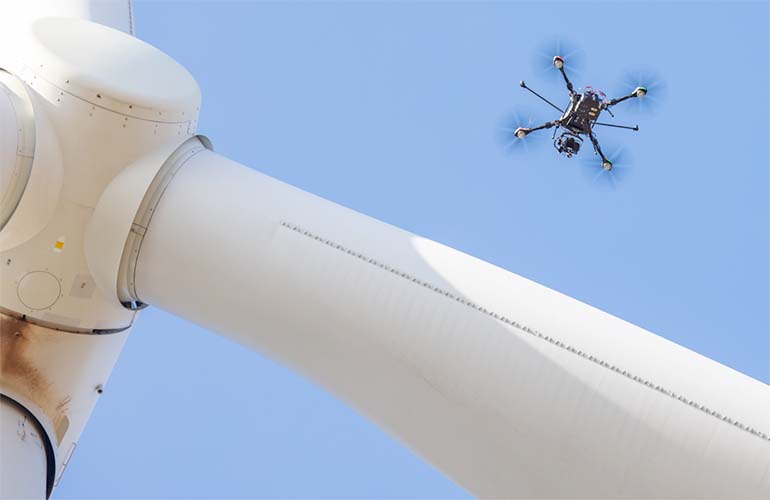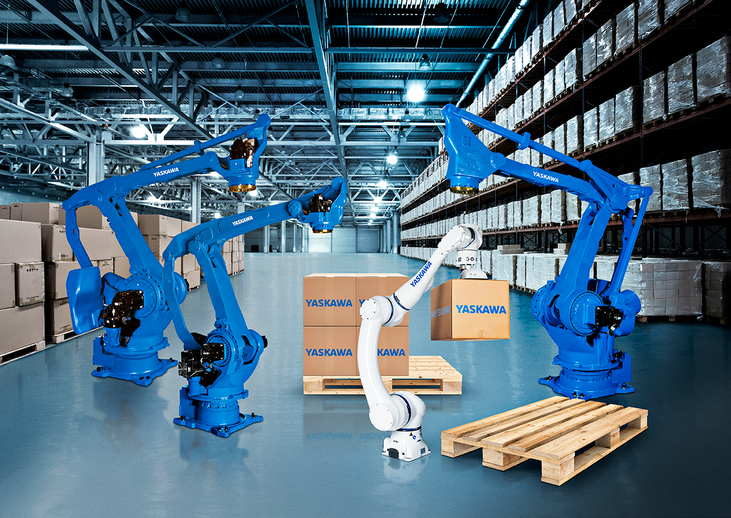At the beginning of the new year, we expand the range of services and introduce to our portfolio the following:
– construction and simulation of digital twins (presentation possible using VR systems)
– presentation and training of line and robotic socket operators in the VR environment
– verification of safety standards in simulation and VR environments
The introduction of the above services was possible thanks to the acquisition of funding under the Regional Operational Program of the Śląskie Voivodeship for the years 2014-2020 (Śląskie Centrum Przedsiębiorczości).
As part of the co-financing, we purchased the latest software and hardware, on which we providing new services.
The possibilities of more3D software in cooperation with Process Simulate and VR goggles from HTC Vive
Below is a description that presents each item in more detail.
The combination of the simulation environment, the VR system and the risk analysis process allows the customer to visually verify the implemented security features in the VR environment. To make it possible, it is necessary to:
Digital Twin
1) Build a digital twin that perfectly matches the future installation. For this purpose, it is necessary to create a concept of the stand, design all mechanical elements and electrical systems. Simulate the whole in a 3D environment, taking into account machine safety standards and additional customer guidelines.
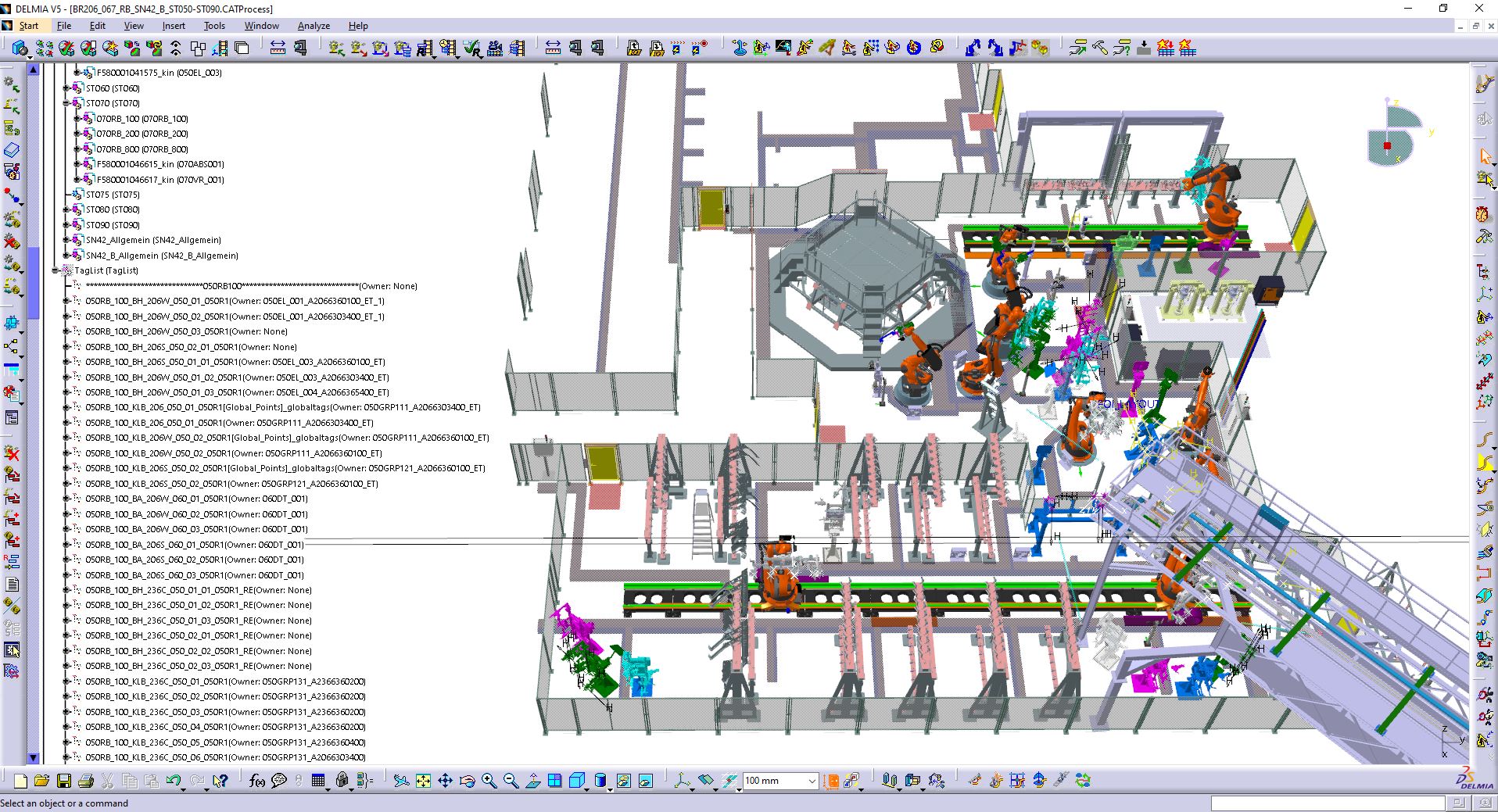
Sample implementation – digital twin – Delmia V5 Robotics
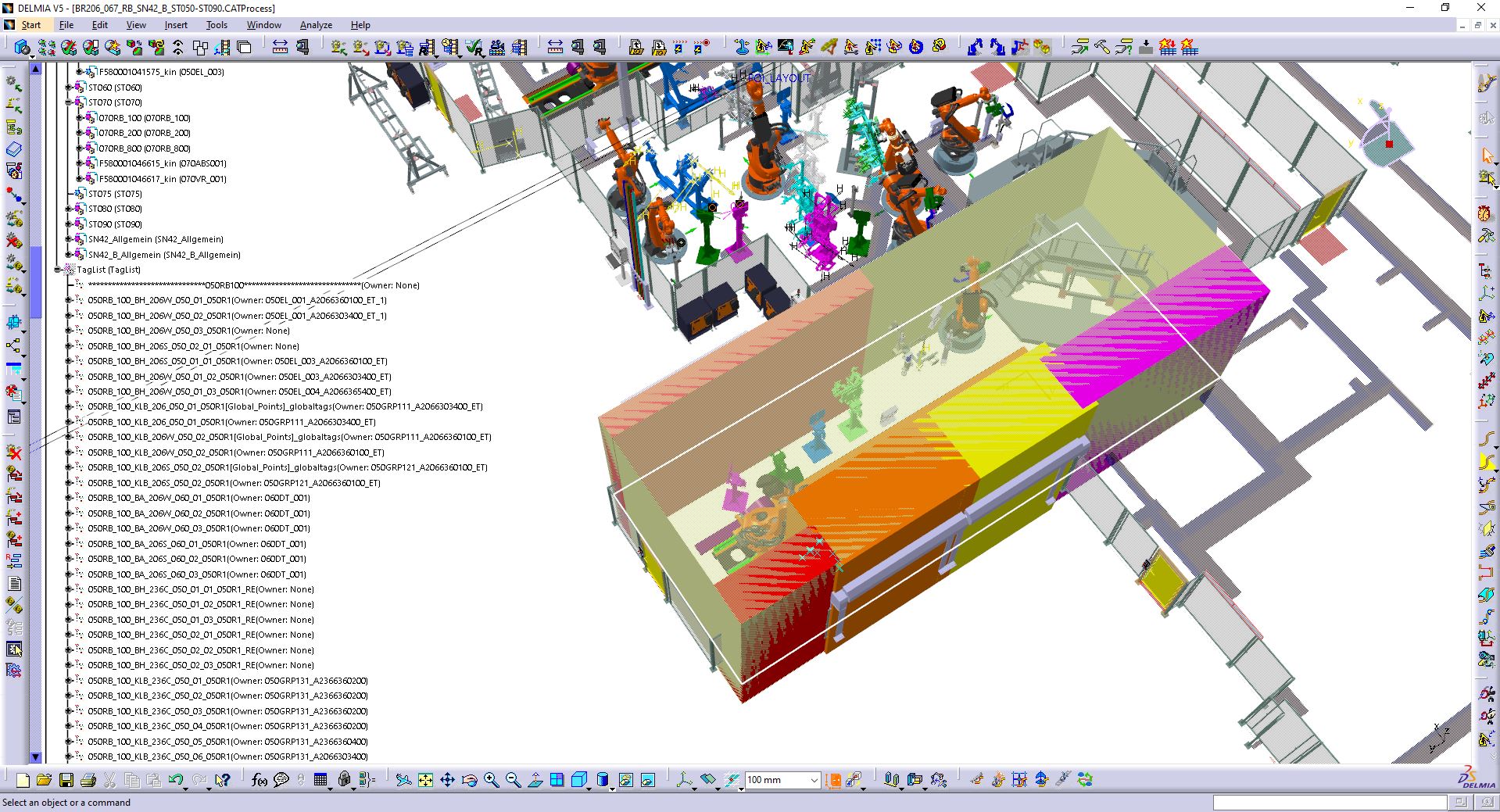
Digital twin – security zones verification – Delmia V5 Robotics

Security verification – Delmia V5 Robotics – Delmia V5 Robotics
Delmia V5 Robotics
2) Program the trajectory of the robots’ movements, the paths of transport robots (EGV), mark out the transport paths of forklifts. Determine the most optimal arrangement of the station’s elements due to the optimization of human work.
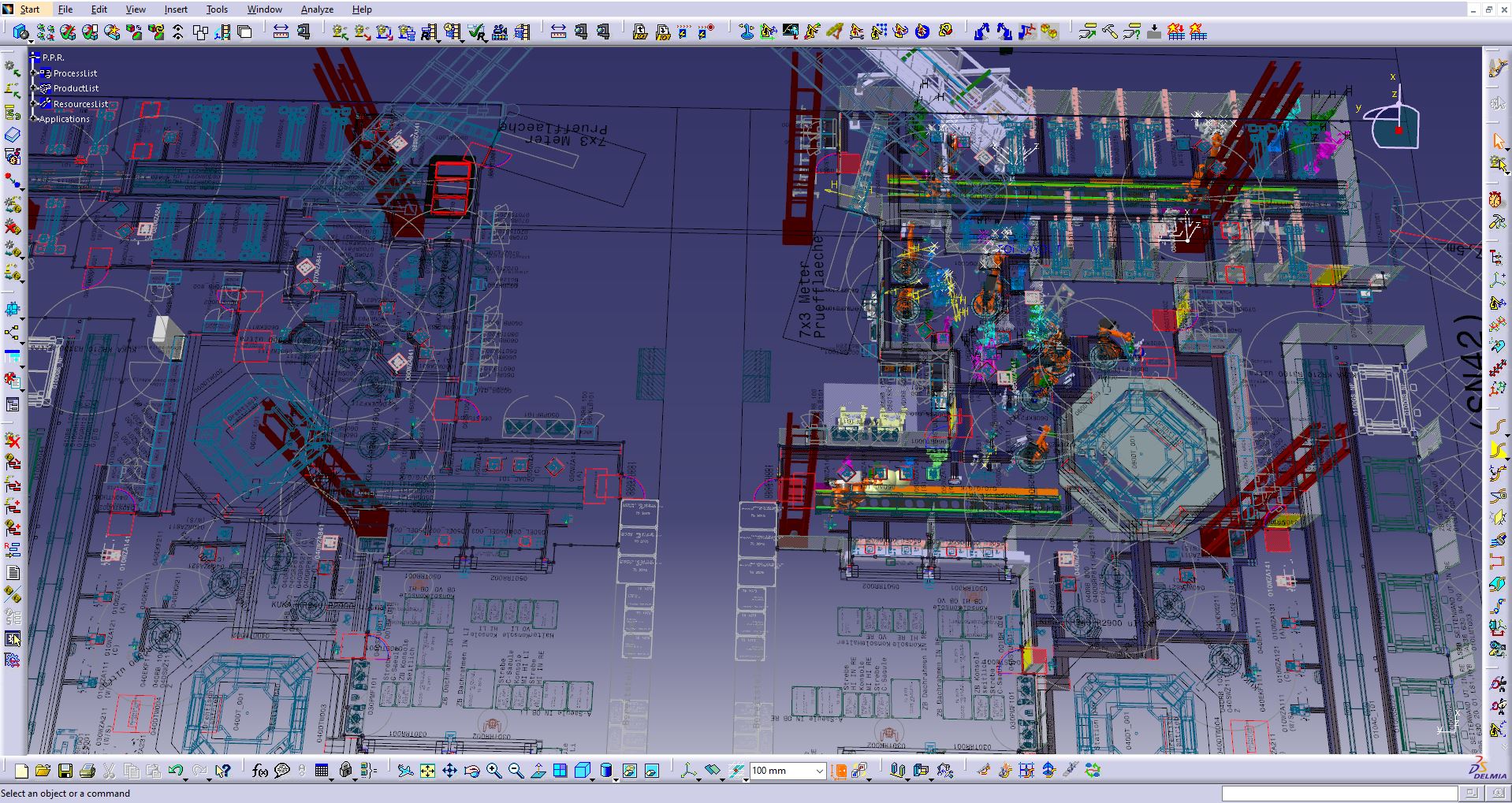
Production line layout – Delmia V5 Robotics
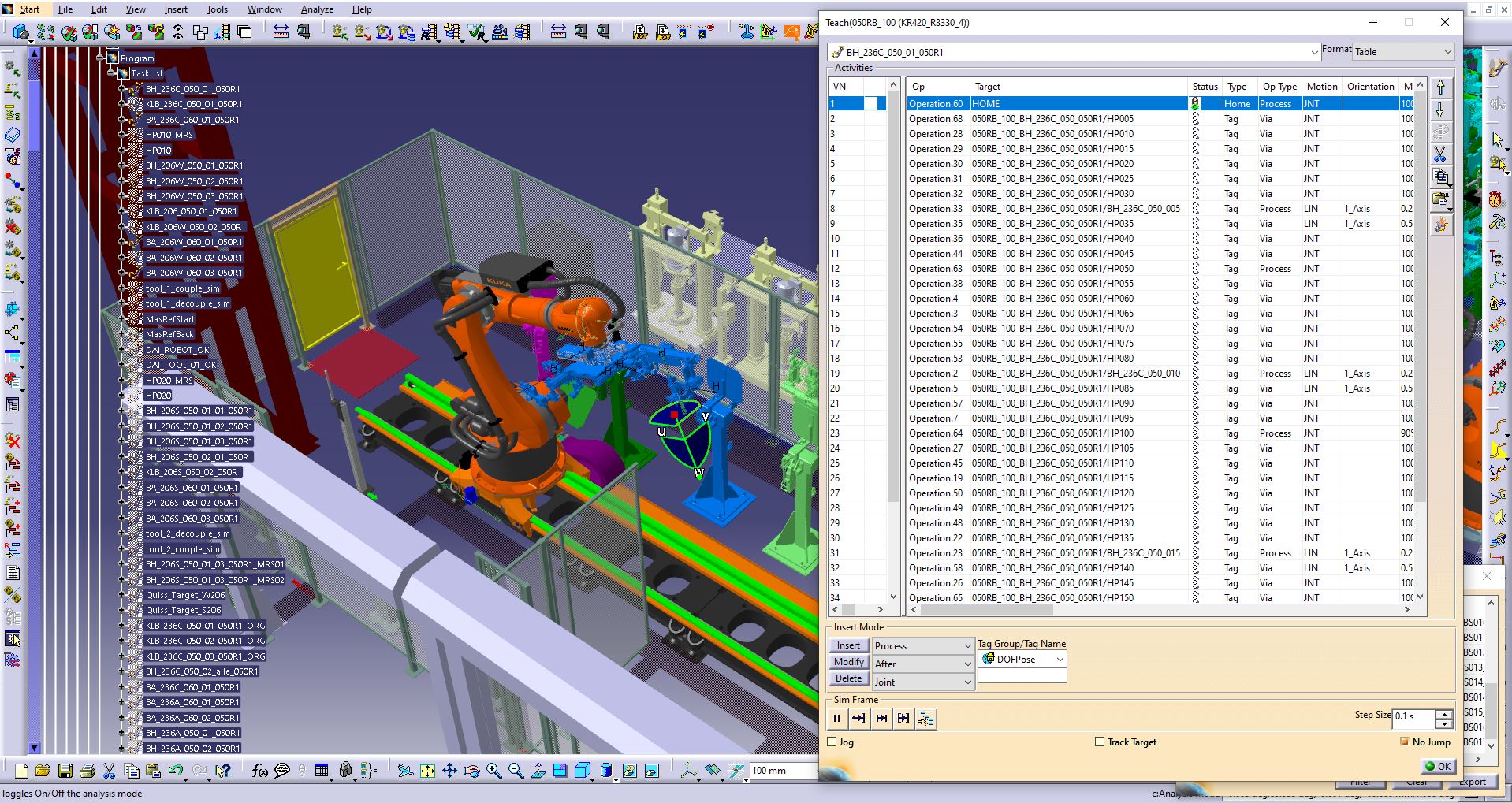
Creating a trajectory of movements – Delmia V5 Robotics
Virtual commissioning
3) Perform a virtual commissioning, during which the compliance of the generated programs for PLC controllers and industrial robots is tested. Process innovation is introduced.
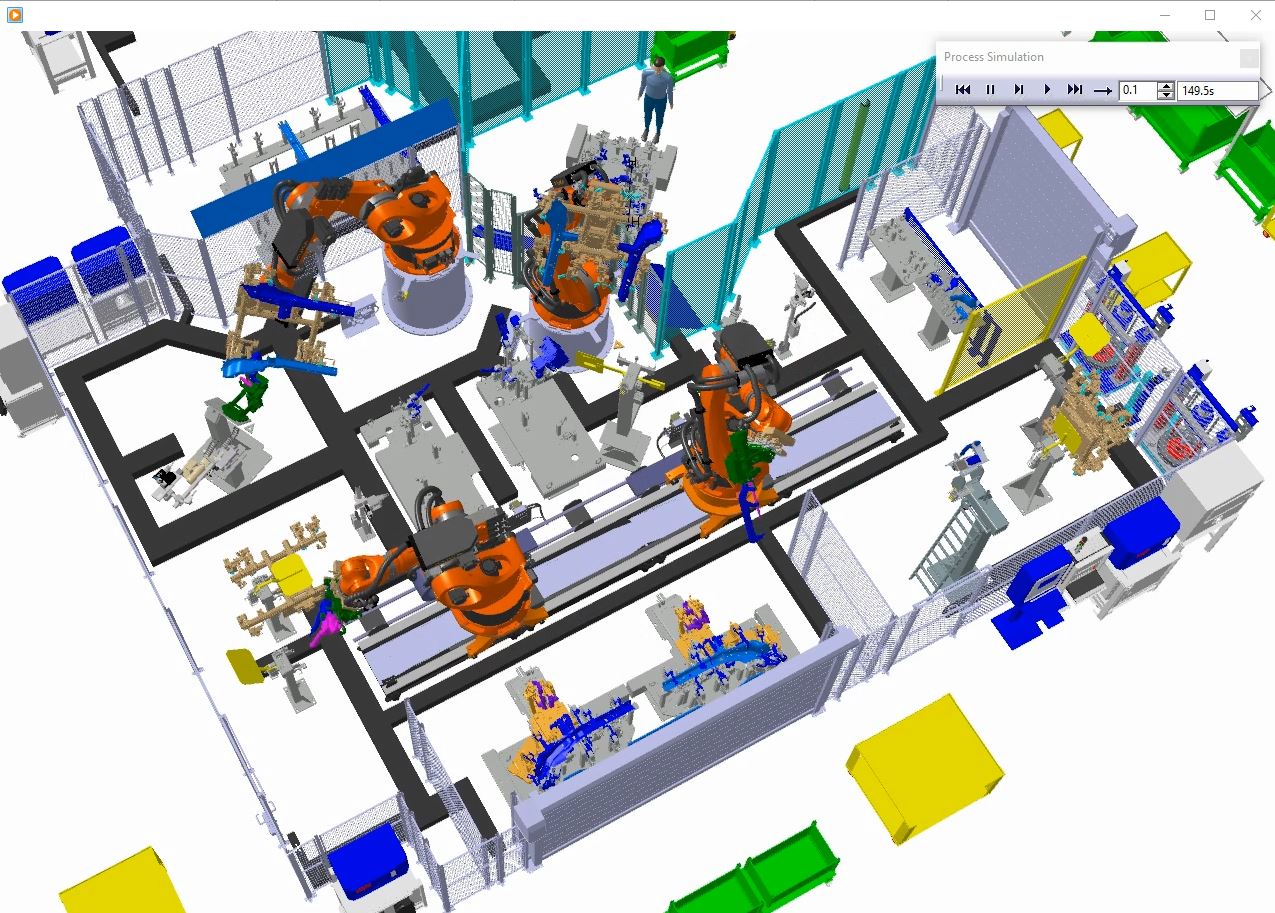
Virtual commissioning – creating a process simulation movie – Delmia V5 Robotics – Delmia V5 Robotics
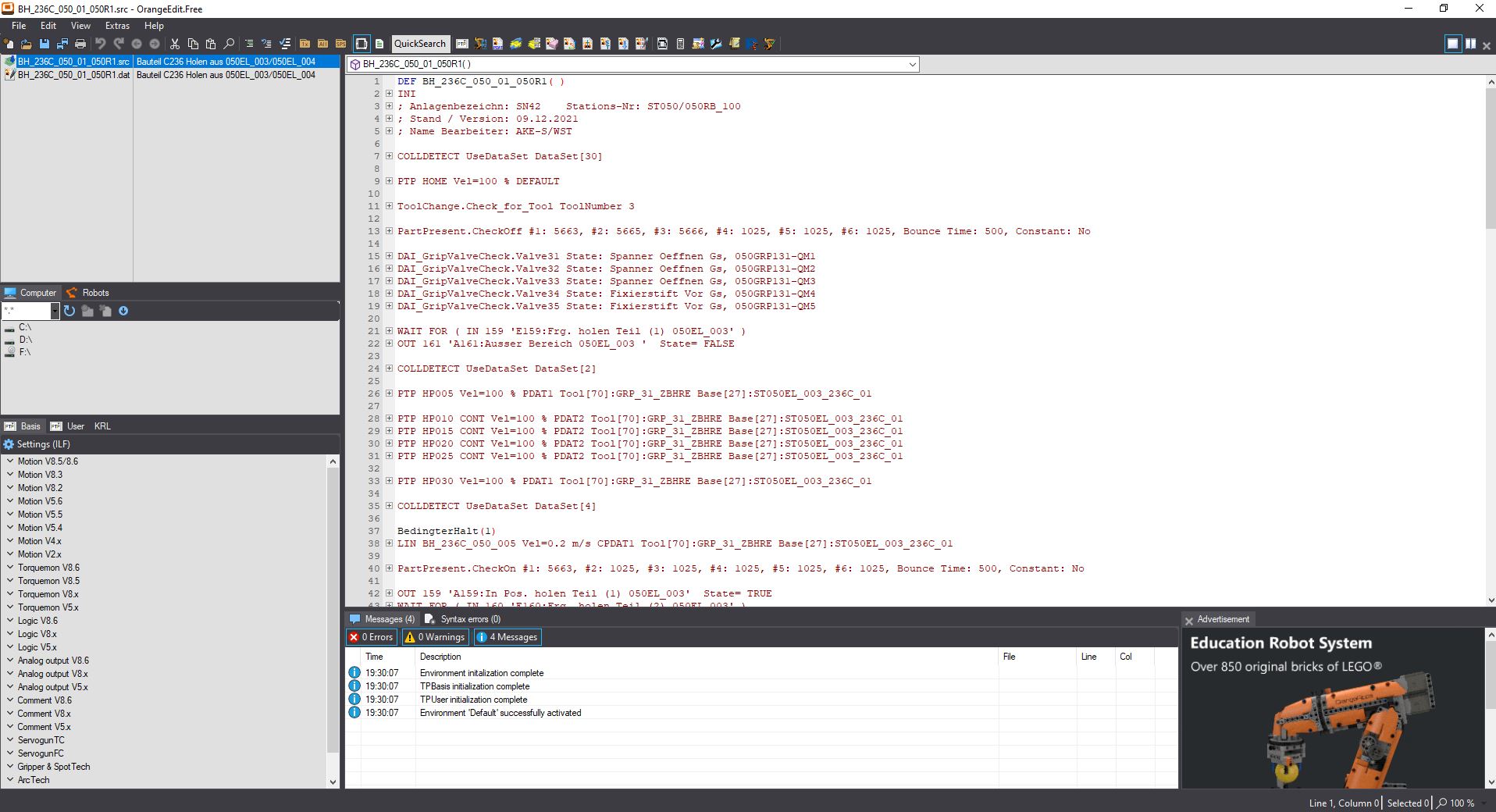
Verification of robot programs – Orange Edit
VR environment
4) We guide customer in the VR environment while simulating the production mode. Client can verify that the line meets all safety standards and additional guidelines in addition to achieving the intended cycle time. The customer is able to verify resented project includes all previously determined installations and whether they have been correctly positioned. Whether the safety curtains and safety scanners have correctly configured ranges. The correct placement of safety buttons or the arrangement of cable channels inside the Safety fence can be verified. If any deviations are detected, we can remove it by introducing changes in the 3D environment. That is much less expensive than possible mechanical changes during assembly at the customer’s site.
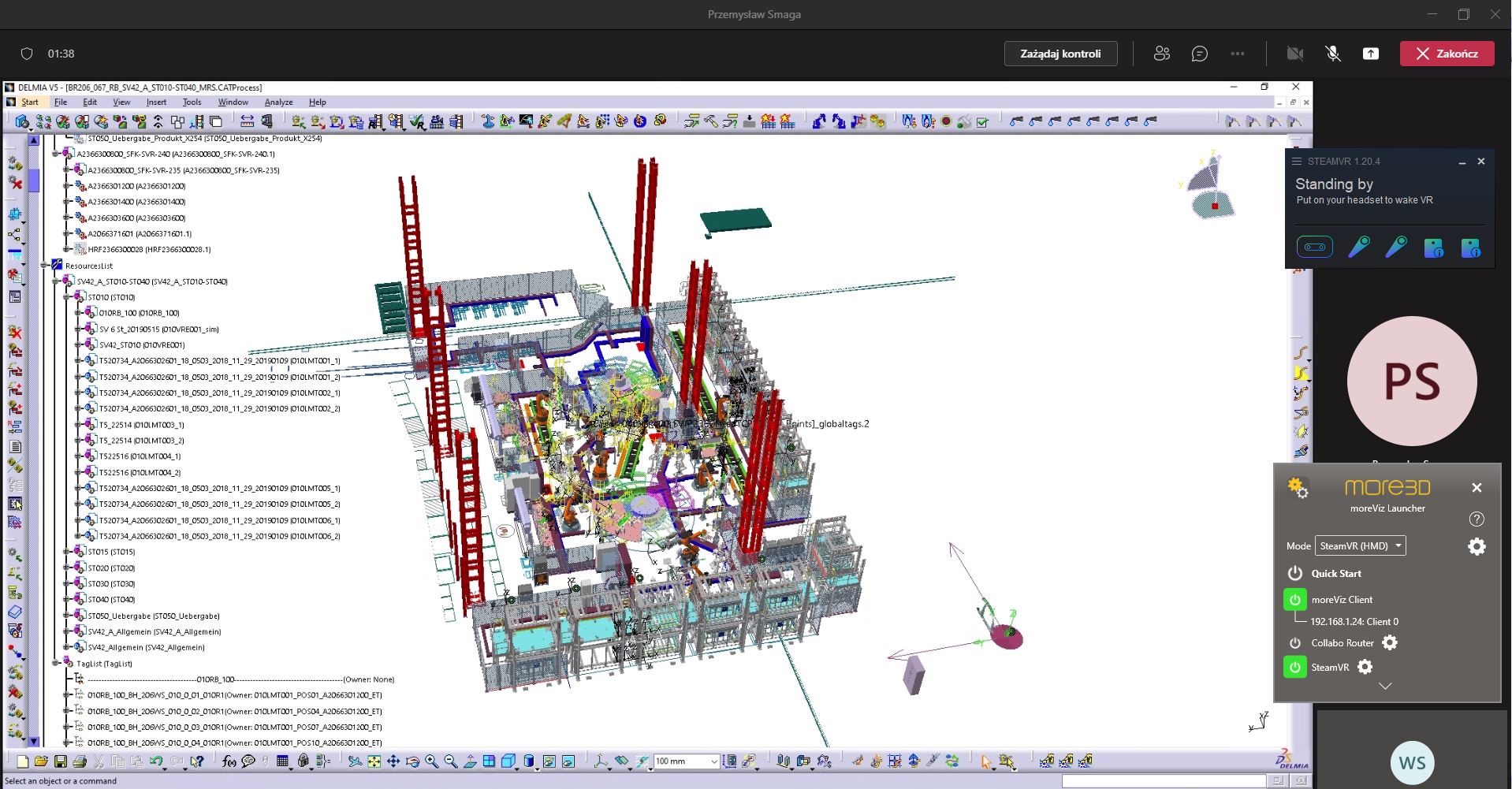
Verification in Delmia in conjunction with more3D software – demonstration of the VR environment
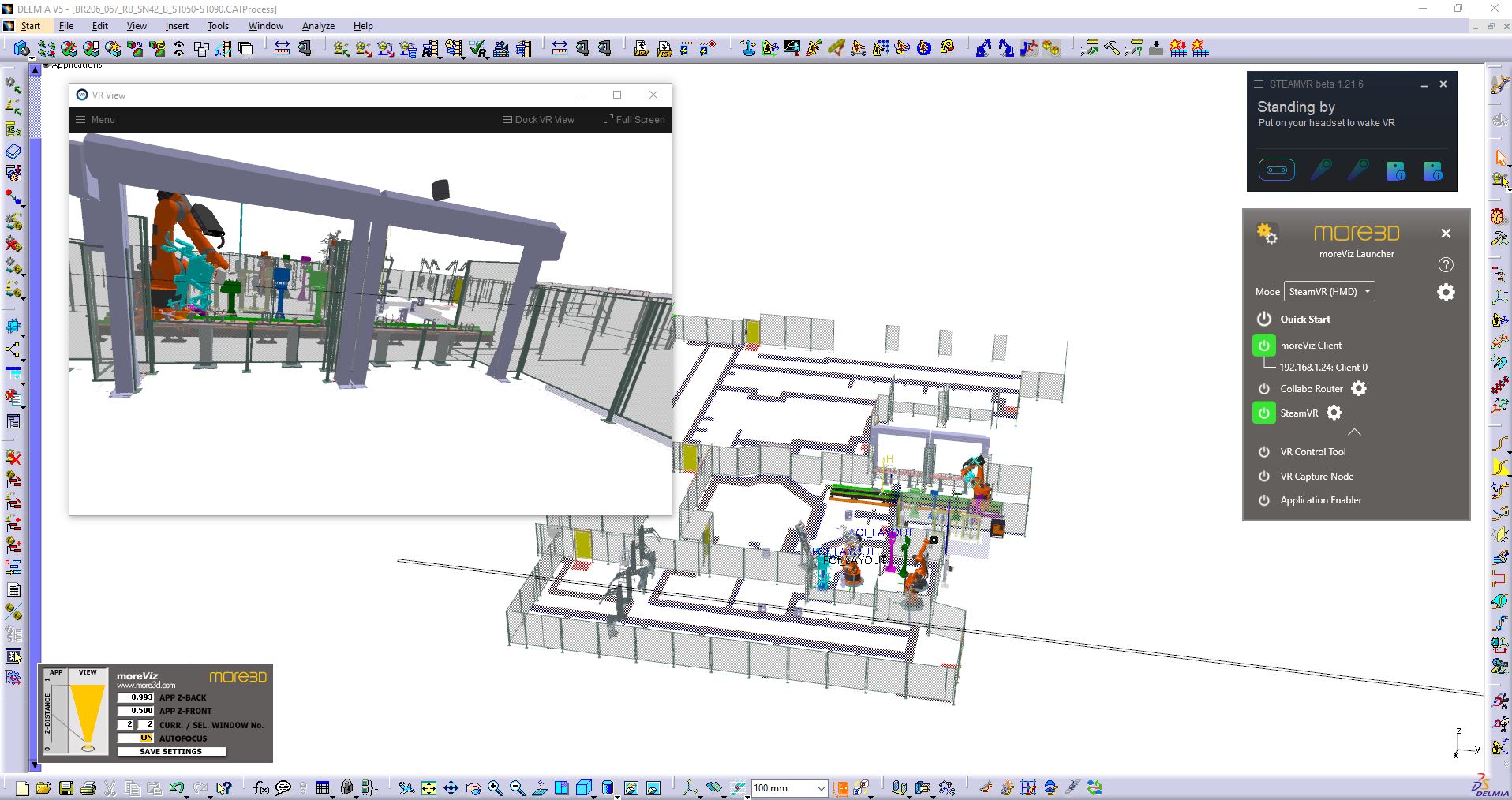
Delmia in conjunction with more3D software – demonstration of the VR environment
Report
5) A report approving the project or introducing the necessity to make changes to the project is generated from the customer’s verification.
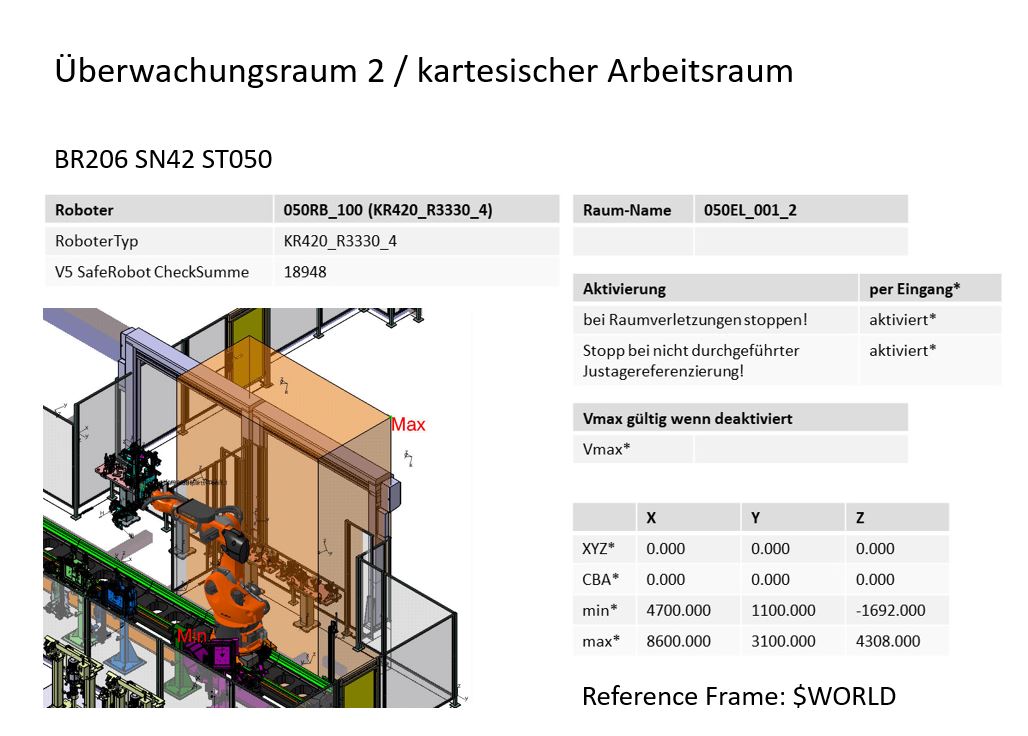
Report – machine safety
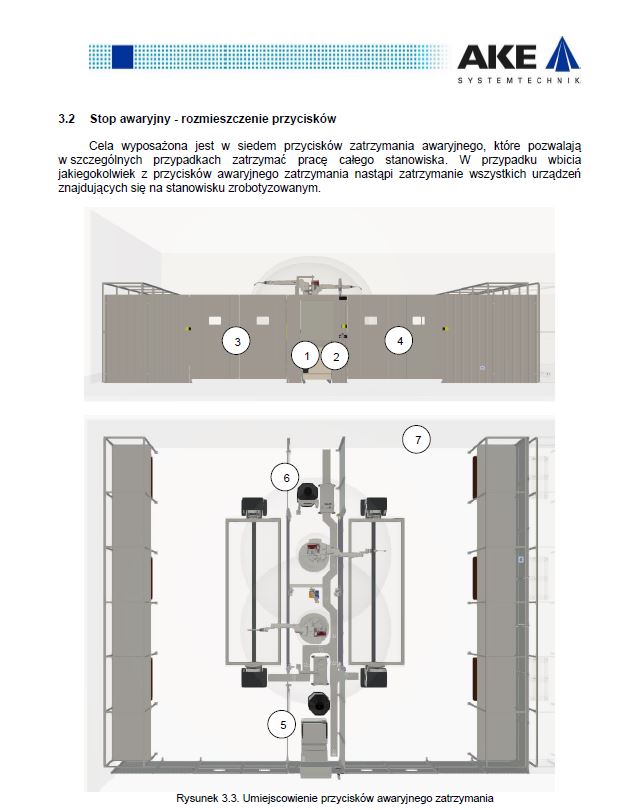
Documentation of emergency stop buttons plan
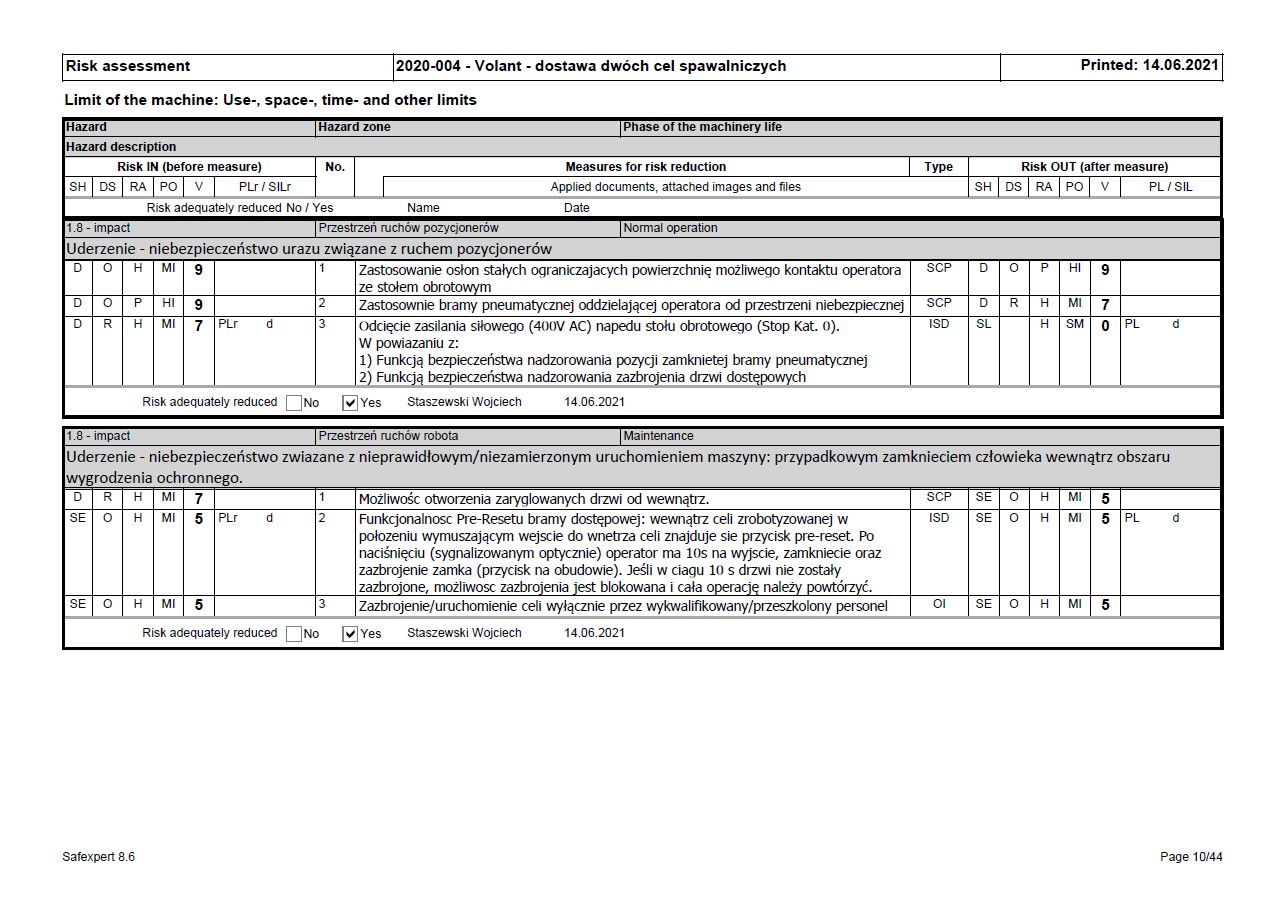
Risk analysis


